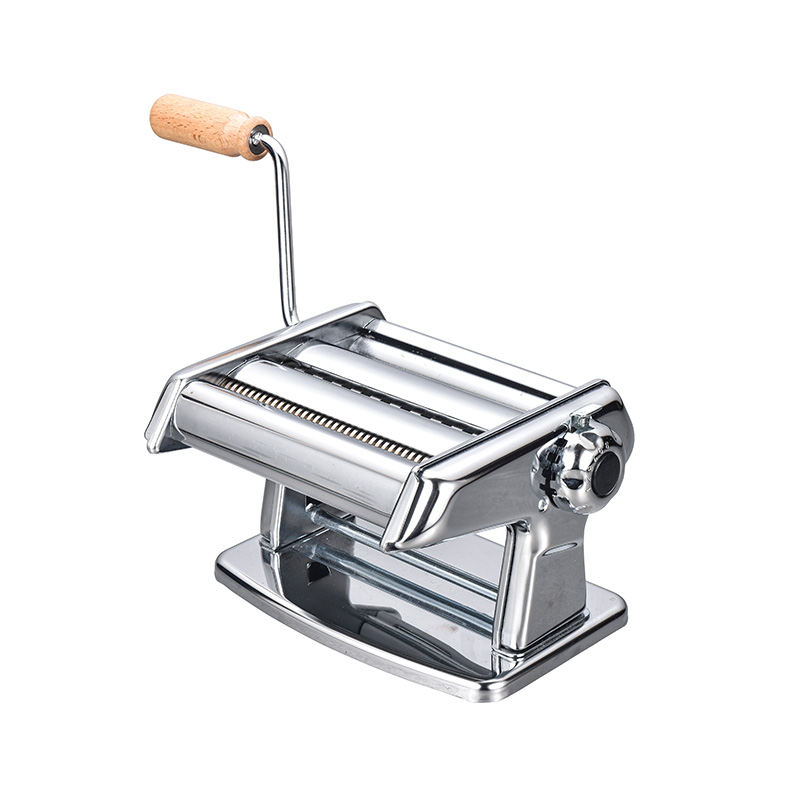In an age where technology continually evolves, some classic kitchen tools are making a comeback. Among these, the manual hand crank pasta maker machine is experiencing a resurgence in popularity. Once overshadowed by electric counterparts, this time-honored device is now celebrated for its simplicity, durability, and effectiveness. The manual hand crank pasta maker machine is proving that sometimes, traditional methods yield the results.
The manual hand crank pasta maker machine offers a nostalgic return to a simpler way of making pasta. Unlike electric machines that rely on complex motors and electronic controls, the manual hand crank pasta maker machine operates with a straightforward hand-crank mechanism. This simplicity is not just charming but practical, allowing users to take control of the pasta-making process with precision and ease.
The resurgence of interest in artisanal cooking and handmade foods has spotlighted the manual hand crank pasta maker machine. Enthusiasts appreciate the tactile experience of turning the crank and watching dough transform into perfectly shaped pasta. This hands-on approach not only connects users with the food-making process but also allows for greater customization of pasta thickness and texture.
Several key advantages contribute to the growing appeal of the manual hand crank pasta maker machine. Firstly, its construction from durable materials, often stainless steel, ensures a long lifespan. Unlike plastic or less robust alternatives, stainless steel withstands frequent use and resists wear and tear. This durability means that the manual hand crank pasta maker machine is a worthwhile investment for any kitchen.
The manual design also enhances precision in pasta making. Users have full control over the thickness of the dough and the shape of the pasta. This level of customization is especially valuable for culinary professionals who require specific pasta dimensions for their dishes. By adjusting the manual hand crank pasta maker machine, users can achieve the consistency and texture for their pasta.
Another advantage is the eco-friendly aspect of the manual hand crank pasta maker machine. Without the need for electricity, it aligns with a growing trend towards sustainable and energy-efficient cooking practices. Users who prioritize reducing their carbon footprint can appreciate the environmental benefits of using a manual tool over an electric one.
The manual hand crank pasta maker machine has found its place in various settings, from home kitchens to professional culinary environments. For home cooks, it offers an opportunity to experiment with different pasta recipes and techniques. Creating fresh pasta from scratch can elevate meals and provide a sense of accomplishment. The manual hand crank pasta maker machine allows for creativity and personalization in pasta making.
In professional kitchens, the manual hand crank pasta maker machine is valued for its reliability and precision. High-volume kitchens benefit from its durability and consistent results. Chefs who demand high-quality pasta find the manual machine to be a dependable tool for producing large quantities of pasta with exact specifications.
Culinary schools and cooking classes also recognize the educational value of the manual hand crank pasta maker machine. Its simple design offers students hands-on experience with traditional pasta-making techniques. Learning to use a manual extruder provides foundational knowledge that enhances students' understanding of food preparation and cooking methods.
When selecting a manual hand crank pasta maker machine, several factors should be considered. First, ensure that the machine is constructed from high-quality materials. Stainless steel models are preferred for their durability and resistance to corrosion. The quality of the materials will affect the machine's performance and longevity.
The design of the hand crank mechanism is also important. A well-designed crank should be comfortable to use and facilitate smooth operation. Some models come with additional features, such as interchangeable rollers or cutters, which can add versatility to the pasta-making process.
Size and capacity are additional considerations. Depending on your needs, you may choose a model that can handle larger quantities of dough or one that is compact enough for easy storage. Consider how much pasta you plan to make and select a model that meets your requirements.

 English
English Español
Español







